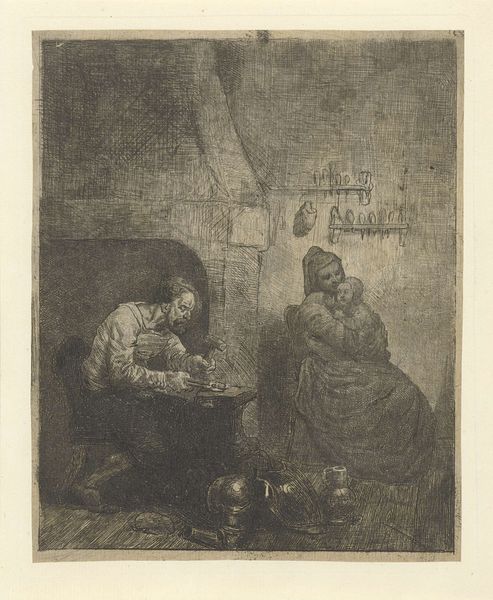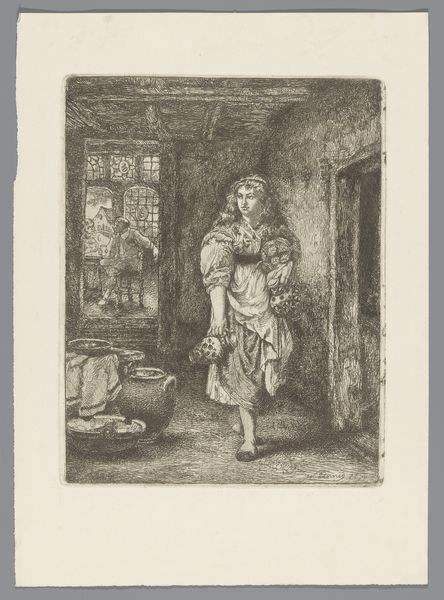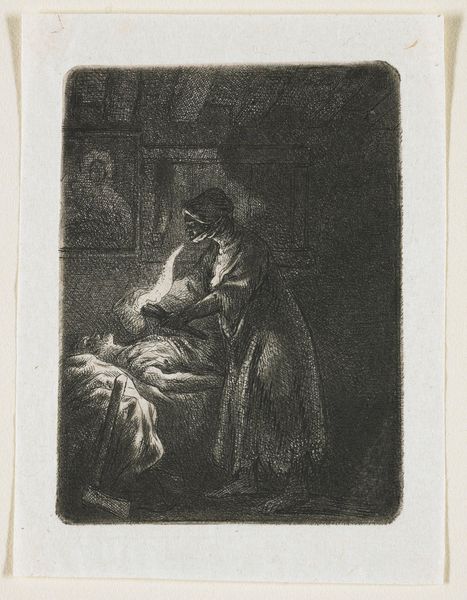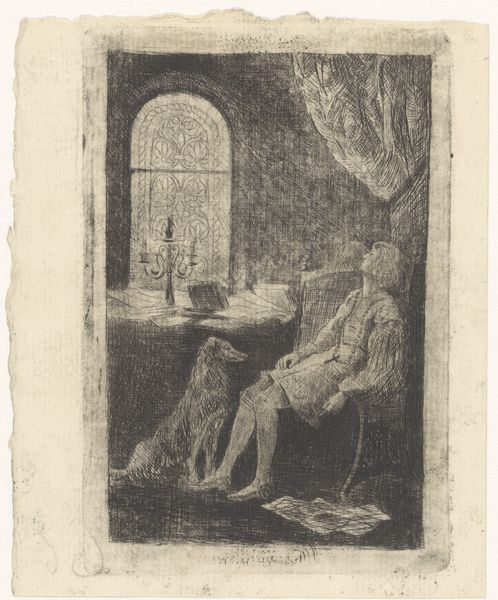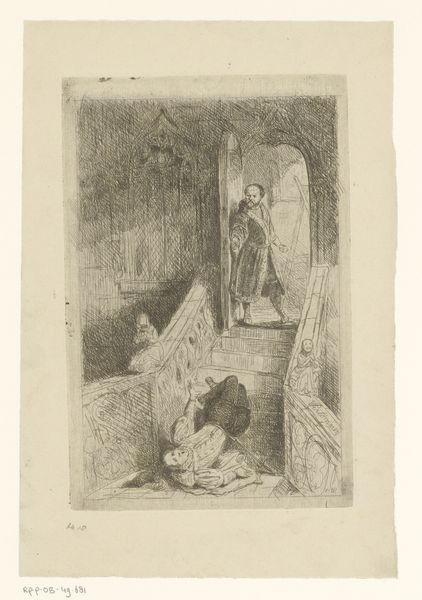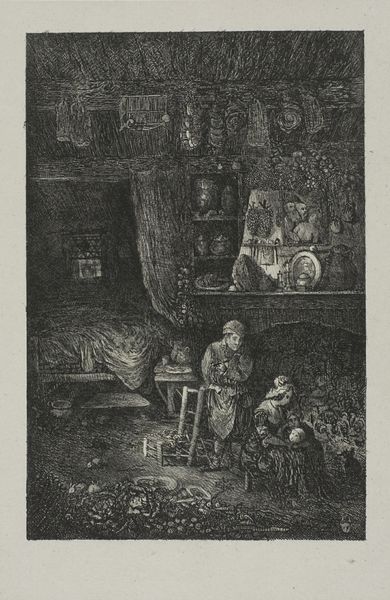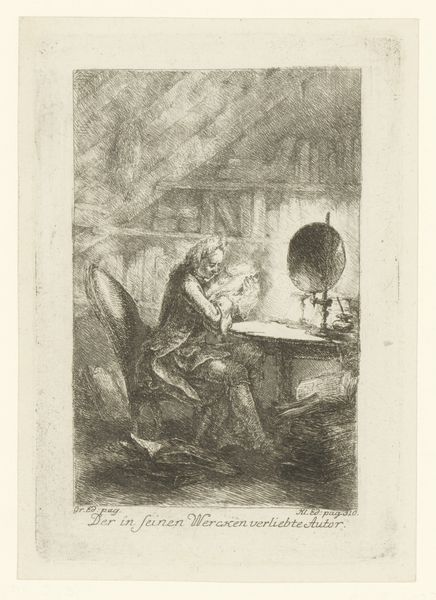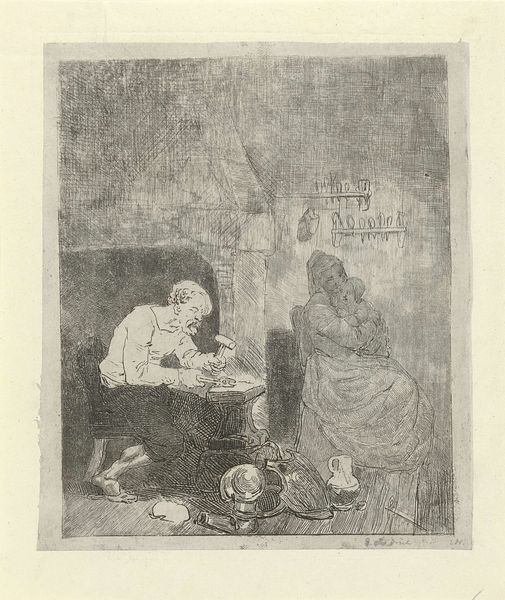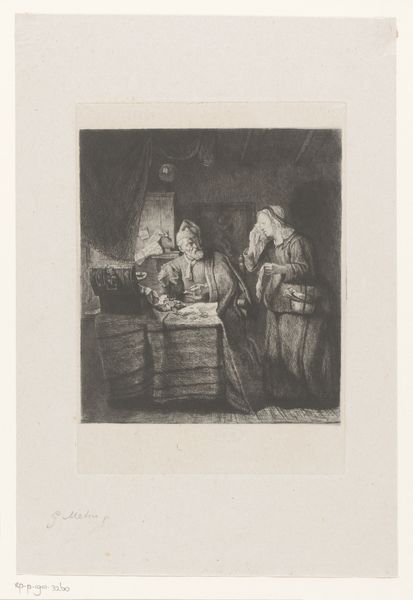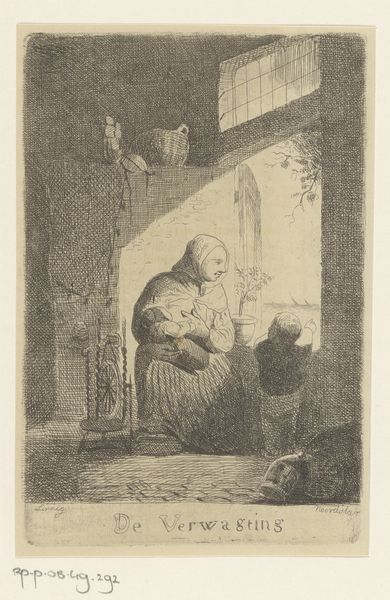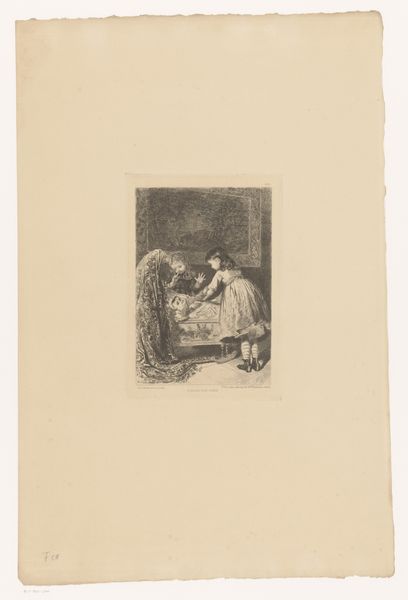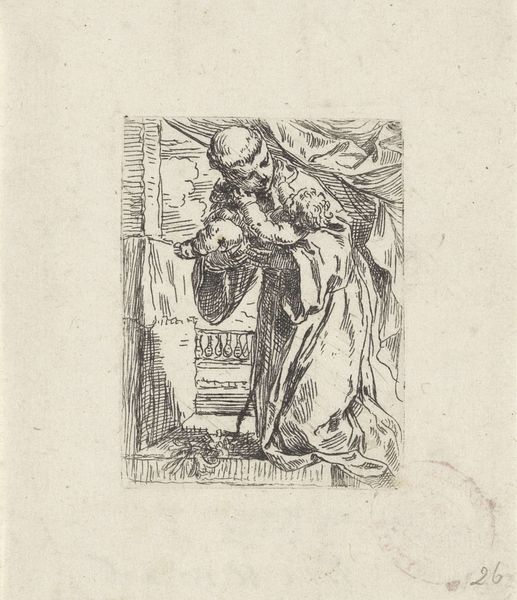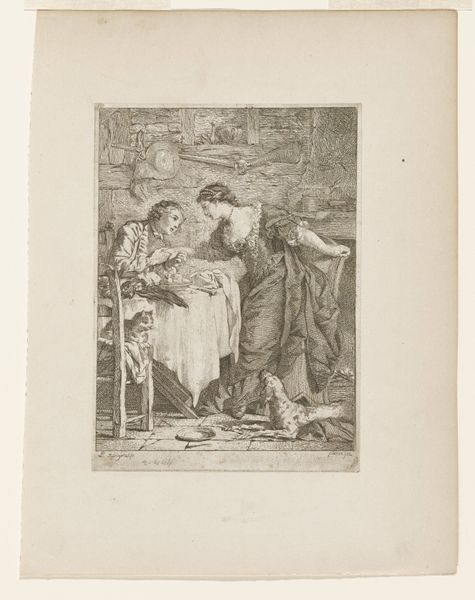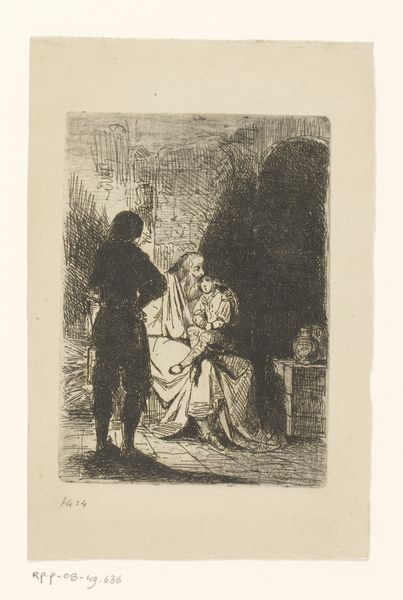
drawing, lithograph, print, etching, paper, ink
#
portrait
#
drawing
#
lithograph
# print
#
etching
#
paper
#
ink
#
genre-painting
#
realism
Dimensions: height 202 mm, width 124 mm
Copyright: Rijks Museum: Open Domain
Curator: Here we have Charles Courtry’s “Vrouw bekijkt een prent achter de tafel van een prentmaker,” created around 1886. This print, which blends etching and lithography, offers a glimpse into the art world of late 19th-century Holland, and you can find it here at the Rijksmuseum. Editor: My first impression is the stark contrast and intricate detail, particularly the way the light catches her gown. There’s a sense of quiet contemplation, maybe even intimacy, in this scene. Curator: Absolutely. Courtry captures not just a scene but also the ambiance of the artistic and intellectual circles of his time. These prints were increasingly accessible to the middle class. Their popularity was connected to a growing interest in art appreciation as part of everyday domestic life. Editor: I notice how the artist leads our eye from the window to the subject’s face, creating a vertical rhythm throughout the composition. Then, the play of shadow creates this captivating sense of depth, adding complexity. Curator: The inclusion of the screen and various artistic tools might signify the artist’s intention to subtly highlight the subject's immersion within, and perhaps even her support for, an artistic environment. These are tools of the printing trade—connecting this woman to its machinery suggests agency and contribution. Editor: Thinking about technique, how does this print balance realism with what seems like an almost dreamlike quality? It almost feels nostalgic even from this distance, looking back at us across time. Curator: That's the marvel of realism; to not simply copy the observable world but to infuse it with sentiment. Consider the societal implications. A print like this challenges established notions of who can appreciate and participate in the arts. It democratizes the role of 'art lover', assigning a public facing role onto it, perhaps one in her very own salon. Editor: The focus isn’t merely on the sitter's likeness, it also evokes introspection and appreciation. And you're right—the art displayed in the woman's quarters emphasizes the culture and domestic lifestyle in play here. Curator: By focusing on these interactions, Courtry prompts a wider cultural reassessment concerning the role of women, artistic communities, and how social status are interwoven during this pivotal period of art democratization. Editor: Thanks, with a deeper awareness, that once simple scene now yields cultural richness, artistic commentary and narrative. Curator: Yes. By giving equal consideration to art's setting and structure, we develop an even more complex awareness and nuanced awareness of its influence in life.
Comments
No comments
Be the first to comment and join the conversation on the ultimate creative platform.
